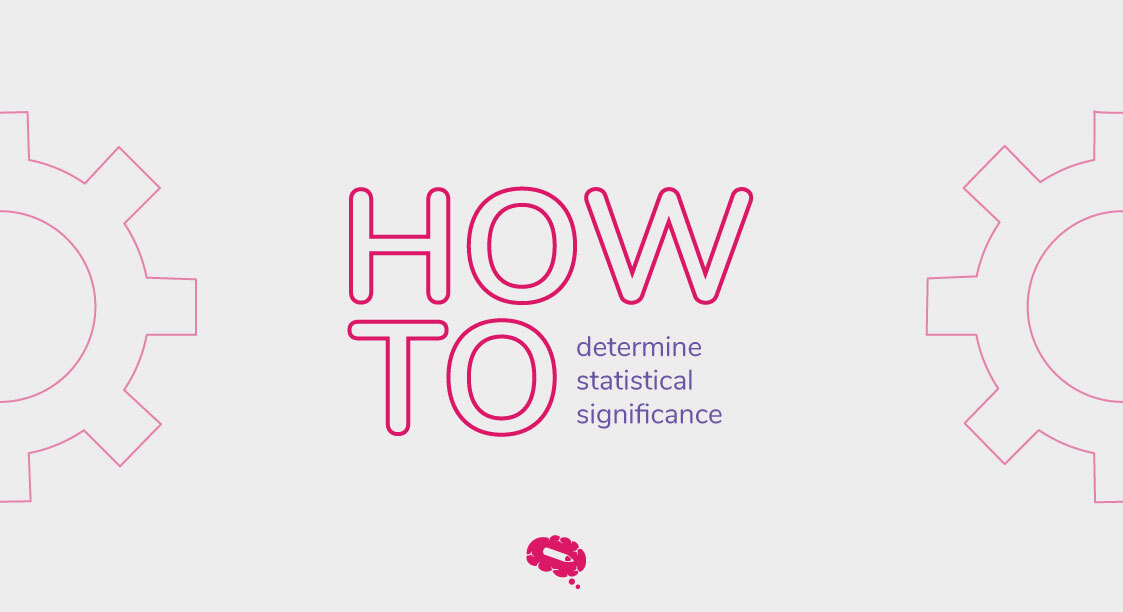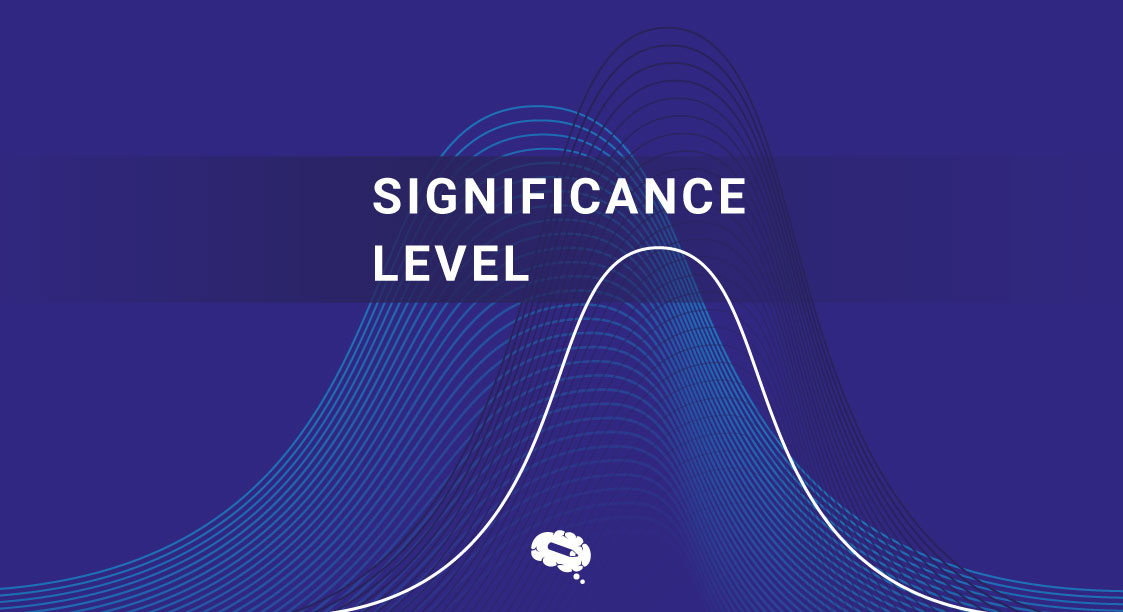In scientific research, statistical significance acts as a guiding compass that helps us distinguish the true significance of our findings from random chance. It allows us to navigate through the noise and uncover meaningful results that have a solid statistical foundation. Whether you find yourself immersed in the realm of research, data analysis, or academia, the ability to determine statistical significance is a fundamental skill for extracting robust insights from data.
However, statistical significance should never be treated as a mere checkbox to be ticked off on your research journey. It demands a keen understanding of the potential pitfalls and caveats that can arise during the analysis process. To navigate this complex landscape successfully, it is crucial to equip yourself with the necessary tools and knowledge.
This article intends to give you a practical and comprehensible guide so you may have a solid understanding of how to determine statistical significance.
What is Statistical Significance?
In order to establish if the findings of a study or experiment are likely to have happened by chance or if they represent a significant and trustworthy finding, statistical significance is a measurement used in statistical hypothesis testing. It is a way to determine whether a dataset’s apparent effect, difference between groups, or variable is not the result of random variation.
Scientists create a hypothesis before performing research, then gather data to test it. They can assess whether the observed data contradicts or supports their hypothesis using statistical significance. It offers a quantitative assessment of the strength and reliability of the evidence supporting or contradicting a certain assertion or relationship.
The determination of statistical significance involves comparing the observed data to what would be expected under a null hypothesis, which assumes that there is no real effect or difference in the population being studied.
Researchers can determine if the observed data is unlikely to have happened by chance alone by doing statistical tests, such as calculating p-values or generating confidence intervals, and by doing so, they can provide evidence to support an alternate hypothesis.
A finding is often considered statistically significant if it has a low likelihood of occurring by chance alone and has a p-value below a predetermined threshold (typically 0.05 or 0.01). If the p-value falls below this threshold, it shows that the observed effect or difference is more likely to be a true discovery than a random fluctuation.
How to Determine Statistical Significance
Determining statistical significance involves a series of steps that help researchers evaluate the strength and reliability of their findings. To understand how to determine statistical significance, follow these steps:
State the Hypothesis
The first step is to clearly define the null hypothesis (H0) and alternative hypothesis (Ha) that reflect the research question or claim being investigated. The null hypothesis assumes no effect or difference, while the alternative hypothesis suggests the presence of an effect or difference.
Set a Significance Level
The significance level, often denoted as α, represents the threshold below which the observed result is considered statistically significant. Commonly used significance levels are 0.05 (5%) and 0.01 (1%). Selecting an appropriate significance level depends on the specific field of study and the desired balance between Type I and Type II errors.
Calculate the Sample Size
The sample size plays a crucial role in determining statistical significance. A larger sample size generally increases the power of the analysis to detect meaningful effects or differences. Adequate sample size determination should be based on factors such as desired power, effect size, and variability in the data.
Find the Standard Deviation
In many statistical tests, the standard deviation (or standard error) is required to assess variability within the sample data. The standard deviation provides an understanding of the spread of the data points around the mean and is essential for calculating test statistics.
Calculate the T-Score
For tests involving means or differences in means, such as the t-test, calculating the t-score is necessary. The t-score measures how far the sample mean deviates from the hypothesized population mean in terms of the standard error. The t-score is calculated using the formula: t = (sample mean – hypothesized mean) / (standard error).
Find the Degrees of Freedom
Degrees of freedom refer to the count of independent observations that can be utilized for estimation purposes during statistical analysis. For a t-test, the degrees of freedom are typically determined by the sample size and the specific design of the study. The degrees of freedom are crucial for referencing the appropriate critical values from distribution tables.
Use a T-Table
To determine statistical significance, researchers compare the calculated t-score to critical values obtained from a t-table or use software tools that automatically calculate p-values. The critical values indicate the threshold beyond which the results are considered statistically significant at the chosen significance level.
The Importance of Statistical Significance
In the world of research and data analysis, statistical significance is extremely important. The importance of statistical significance is illustrated by the following points:
- Reliable Inference: Statistical significance offers a framework for generating trustworthy inferences from data. Researchers can establish if their findings are likely to reflect real patterns or relationships in the population being researched by estimating the chances of observing certain results simply by chance.
- Chance vs. Real Effects: The use of statistical significance aids in separating random variations from actual impacts or differences. It enables researchers to decide whether an observed result is most likely the result of chance or if it represents a significant and systematic occurrence.
- Decision-Making: Decision-making is aided by statistical significance in many different areas. For instance, in the medical field, evaluating whether the observed improvements are statistically significant is necessary to ascertain the efficacy of a new treatment.
- Assurance in Findings: The level of assurance in study findings is determined by statistical significance. A statistically significant result implies that the observed impact or difference is unlikely to be a random coincidence, giving researchers additional assurance that their findings are reliable and generalizable.
- Replication and Reproducibility: In order to address the issue of reproducibility and replication in scientific research, statistical significance is important. When statistical significance is established, it suggests that the observed effects are unlikely to be random or isolated events, making it easier to reproduce or replicate a study’s findings.
- Scientific Validity: The scientific validity of research findings and statistical significance are closely related concepts. Researchers must present evidence that satisfies the requirements of statistical significance in order to assert a significant impact or difference, adding rigor and credibility to their work.
- Interpretation of Statistical Findings: Interpreting the findings is aided by statistical significance. In order to reach meaningful conclusions and to better comprehend the consequences of the findings, it enables researchers to measure and explain the strength of the evidence supporting their hypothesis.
Ways to Use Statistical Significance
Statistical significance can be applied in various ways to enhance research and decision-making:
- Testing Hypotheses: Statistical significance aids researchers in deciding if the evidence from the observed results is sufficient to reject the null hypothesis and accept their alternative hypothesis.
- Comparing the Effects of Different Interventions or Treatments: Statistical significance is utilized to find significant differences between the effects of different interventions or treatments.
- Relationship Assessment: The strength and importance of relationships between variables are assessed using statistical significance.
- Validating Survey Results: By establishing whether observed differences between groups are significant or the result of chance, statistical significance ensures the accuracy of survey results.
- Quality Control and Process Improvement: By analyzing the effects of adjustments to procedures or interventions, statistical significance assists in discovering effective solutions for improving quality and efficiency.
- Scientific Research and Publication: To validate discoveries and add to the body of knowledge, statistical significance is presented in scientific research.
Examples of Statistical Significance Application
Here are a few examples that demonstrate the application of statistical significance:
- Clinical Trials: Statistical significance is used to determine if the observed improvements in a treatment group compared to a control group are statistically significant, indicating the effectiveness of new drugs or treatments.
- A/B Testing in Marketing: Statistical significance helps identify significant differences in user responses and conversion rates between different versions of marketing materials, enabling marketers to make data-driven decisions about which version performs better.
- Opinion Polls: Statistical significance is used to draw conclusions about a larger population based on responses from a sample, by calculating confidence intervals and testing for statistically significant differences.
- Economic Studies: Statistical significance is employed to evaluate the impact of policy changes or economic factors, such as assessing whether a tax policy change has a statistically significant effect on consumer spending patterns or employment rates.
- Environmental Studies: Statistical significance is applied to analyze data on pollution, climate change, or species diversity, enabling researchers to identify significant trends or associations in environmental variables.
- Psychology Experiments: Statistical significance helps assess the effects of interventions or treatments on human behavior or mental processes, determining if the observed differences between experimental and control groups are statistically significant, and providing insights into the efficacy of psychological interventions.
Turn your data into easy-to-understand dynamic stories
Mind the Graph transforms the methods by which scientists communicate and disseminate their research findings. By utilizing visualization, interactivity, and storytelling, the platform empowers researchers to convert intricate data into captivating visual narratives. Whether it involves simplifying complex concepts, enriching research publications, or broadening outreach, Mind the Graph equips scientists with the tools to captivate their audience, foster comprehension, and ignite scientific curiosity.

Subscribe to our newsletter
Exclusive high quality content about effective visual
communication in science.






